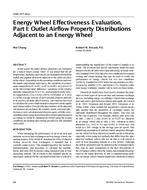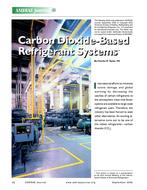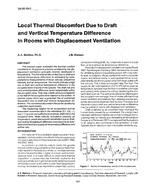The moisture buffer capacity of hygroscopic materials can be used to moderate the relative humidity of indoor air as well as moisture content variations in building materials and furnishing. Since moisture plays a significant role in the development of many processes that affect the quality of the indoor air, such as growth of house dust mites, emissions from materials, and mold growth, it is anticipated that the moisture buffer effect can help to ensure healthier indoor environments.
Building materials, as well as furniture and other furnishing materials exposed to indoor air, will contribute to the moisture buffer capacity of rooms. Few studies have been made on the impact of furnishing materials in comparison with traditional building materials. This paper will present such a study conducted in a full-scale climatic test cell.
A series of experiments have been carried out in the test cell to show the moisture buffer performance of various furnishing objects. The objects will be exposed to cyclic humidity variations as in an inhabited indoor environment, and the response of the indoor humidity will be followed over time. It will be a step-by-step investigation starting with an empty room and going toward a fully furnished room. Comparisons are made with previous studies covering traditional building materials and calculations.
The study shows that the furnishings have to be included in the understanding of the moisture buffering performance of a room and that more material data in this area is needed.
Citation: Thermal Performance of Exterior Envelopes of Whole Buildings IX
Product Details
- Published:
- 2004
- Number of Pages:
- 11
- File Size:
- 1 file , 3.4 MB
- Product Code(s):
- D-BldgsIX81


